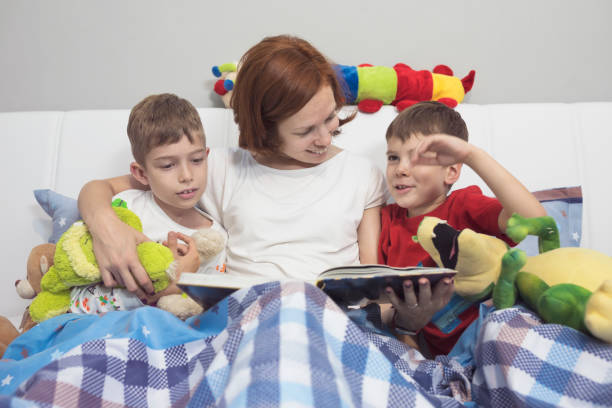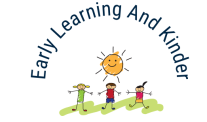5 Tips to Tame the Terrible Twos

Your 18-month-old daughter is playing in the garden while you enjoy a cup of coffee at your mother’s house.
She was perfectly happy to smell the flowers…until now.
She digs into the soil with her hands and pulls out a beautiful petunia.
“No Sweetie!” you say to her. Please don’t harm Grandma’s flowers.
Her brown eyes look at you. These eyes, which are usually innocent and sweet, have darkened today.
She grabs another flower and tears it out of the ground.
You’re left speechless.
You look at your mother-in-law sitting next to you. Does she laugh?
She says, “You think this is bad.” “Wait until she hits her horrible twos! “
You’ve got it. The terrible twos. What parent hasn’t heard this incredibly helpful phrase at one point or another?
No doubt, the twos is a time of change. Your child will be alternating between wanting to depend on you and also testing her independence. Tantrums and mood swings are more common.
Parents who have taken my FREE CLASS, or those who are part of our Seven-Step Parenting Success System(r) courses, have all shared their experiences with the terrible twos.
Twos can be less sweet and more salty. They don’t have to be horrible!
Some of your best memories are just around the corner.
You’ll learn how to enjoy the wonderful things that 2-year-olds have to offer while also surviving the less-than-fun parts of this developmental stage.
What is the one really terrible aspect of the second year? The end will come all too quickly!
What drives the Terrible Twos?
Let’s first talk about what drives the behaviors that are often attributed to the terrible twos.
Attention and power are needed.
After their physical needs are met, children are hard-wired to fulfill their emotional requirements. They need to feel important and a sense of belonging in their family.
They subconsciously desire our focus and long for a feeling of control and power appropriate to their age. This becomes evident in their second year.
We must positively meet these needs since no child will say, “Hey, I need your attention” or “I want to feel in charge for a while.” Our children will resort to less desirable behavior if we do not.
We see whining and clinging when they are seeking attention. Tantrums and meltdowns are used when power is the goal.
Think about it. We want to be in control as adults. Why should our children be different?
By positively addressing these needs, you can take the sting of the terrible twos.
The Lack of Verbal Skills
Around the age of two, your child’s language and speech development will take off. It’s not surprising that your child can be difficult to understand, even though he may sometimes use it.
He may be able to tell you that he loves or asks for milk, but he’s still learning how to express more complex feelings.
We see this in our children’s behavior. They can’t seem to get their message across.
Your son may be kicking and screaming in the kitchen, and you might dismiss it as a side effect of the terrible twos. But he really wants something else and isn’t sure how to say so.
Parental Misunderstanding
The terrible twos aren’t just for kids. Both parents play a role in the good experiences and the negative ones.
A mistake I see often is to label a 2-year-old’s desire for autonomy as “misbehavior,” but in reality, things are not so black and white. What might seem like defiance is actually her way of testing boundaries and determining where she can gain more control and power.
The real problems begin when we try to punish or control this exploratory behavior.
It will benefit you as a parent to have a better idea of what is expected from your child at this age. Understanding the why behind tantrums and mood swings will help you navigate these situations in the future.
Here are five tips that will help you to tame the terrible twos.
Five Tips for Taming the Terrible Twos
Fill their Attention Bucket
Children want attention. They will do anything to get it, whether positive or negative.
Imagine you have had a hectic morning working remotely while also finishing chores in the house. You’ve put your child in front of the television to complete your work.
As soon as your last work call ends, he rushes into your office to beg for snacks and new shows.
You can calm him by whispering and promising to go to the park afterward.
Nothing works. In the middle of a call in your office, he had a tantrum.
It may be tempting to scream at him or to threaten punishment once you are off the phone, but resist.
Why would you do that? You’d pay attention to his behavior. Tell him to try it again next time when you are trying to finish work.
He wants attention, even if it is negative.
Fill his attention bucket with positive ways! You can try…
MIND, BODY and SOUL TIME(r), routine
Spend time with your child each day. It doesn’t need to be long; just 10 minutes is enough. But it should be something special. They should choose the activity.
Then, label it!
“I love our mommy and son time together every day.”
You can let him choose his favorite book to read. Grab some coloring sheets and create art together. Take a walk in the nature. There are many possibilities.
You’ll notice that his behavior will improve as you spend more time with him.
In the example above, it is even better to schedule your special time PRIOR to starting your work to avoid any interruptions.
You’ll see positive behaviors increase when you satisfy his need for attention. Even a 2-year-old can be positive!
Encouragement Phrases
There is a difference between words of praise and encouragement. Many parents confuse the two.
It may seem natural to say, “I am so proud of you!”
What would be better than that? Encouragement!
You can say, “Look how clean the floor is!” Your hard work must make you feel proud .”
Instead of praising the person, use encouraging words to focus on the action and not the performer. This will help her learn to motivate herself and seek less approval from others.
Your daughter will receive a lot of positive attention if you use supportive language. She will be encouraged to keep up the good behavior.
Review step 2 of the online training program 7-Steps Parenting Success Systems(r) to find more encouraging phrases that you can use with your children.
Engage in Conversation
Nothing is as stimulating as a good conversation. It can make a difference to your day if you feel heard and that you have gotten something off of your chest.
Even 2-year-olds are affected by the same feelings. Perhaps even more so!
Show some interest in their conversation.
You can ask, “What is your favorite activity at daycare?”
You’ll learn new things about them that you would not have known if you hadn’t taken the time to listen and ask.
Fill their Power Bucket
In order to influence toddler behavior positively, you must provide positive attention. This goes hand in hand with positive power. You know your child is no longer a baby, and he wants to be more independent, but you still have trouble getting him to tell you.
You’ll also need to satisfy his desire for positive energy.
This tool is very simple to use and has a big impact. Take a minute to think about your daily routine. Ask yourself how you could relinquish some power and control.
This may allow him to choose his red or blue sandals at age two. Is he going to have cereal or oatmeal for breakfast? Do you go to the park after or before a nap?
Allowing your child to take these small (but important!) Allowing your child to make these little (but significant!) decisions will give him an enormous boost of positive power. This will reduce the negative behavior that you see in power struggles.
It is time to work with his increasing need for independence, not against it. This can be a difficult thing for parents. You want to make sure that your children are as well-advised as possible, right?
By stepping back a bit and handing them the reins, you are actually helping. You may need to practice a bit, but you will see many improvements over time.
Tip #4: Make Time for Training
You may be afraid to take your 2-year-old to the supermarket because of how she behaves in the checkout line. You may be worried about taking your 2-year-old to playdates because she always throws a fit whenever you tell her it’s time.
Whatever the situation, I understand your frustration and your fear. I encourage you to Make Time for Training.
Little children benefit not only from routine but also from knowing what to expect.
Spend some time before you go to the grocery store, doctor, or church, talking about what your guests can expect and what you are expecting of them.
We are only going to buy milk today. This visit will not include any sweet treats. You can still be calm, even though there won’t be a sweet treat. .”
You are teaching your child how to behave in certain situations when you spend time training. She won’t understand how to behave if you don’t first teach her!
Role-playing is a great way to achieve this. Make it engaging and fun by acting out what you would do on a trip to the shop. You can then swap roles and let her be the child while you are the parent (kids love this).
Remember, it takes time and consistency. You’ll soon see results every time you go.
Tip #4: Know their triggers
Like adults, children also have triggers that lead to less-than-ideal behaviors.
It is amazing how often we dismiss behavior as a side effect of the “terrible twos” when it has a rational and easily avoidable reason behind it.
Does your child get irritable when he doesn’t take his afternoon nap on time? Is he a rager when he is hungry? Bored?
We know our children the best. With a little foresight, planning, and preparation, we can avoid these triggers altogether.
When you’re out, keep a few healthy snacks handy.
Plan playdates, appointments, and outings to coincide with naptime.
If you think your child will be bored, bring along some coloring pages or a toy.
Tip #5 – Shift your thinking
Even though they’ve been around for a while, two-year-olds have just begun their journey to learning how to act in different situations. You’ve been doing everything you can for them up until now. But things are changing!
They are already learning how to be independent in the real world.
It’s not uncommon for parents to lose their cool when their child goes off track. Are they unaware that screams, tears, and hits will only get them into trouble?
Actually, no. They don’t really understand. They don’t understand.
It would be best if you educated them.
A shift in your thinking will make a huge difference to how you perceive your 2-year-old’s behavior. This and an enormous amount of grace.
Your daughter is not a bad child for throwing a temper tantrum because you asked her to leave the park. When she forgets to thank or say please, it’s not because she is bratty.
She is a small person who has not acquired the necessary tools to deal with the situation.
Show your child some compassion when she is exhibiting the terrible twos. You will be surprised at how changing your reaction can lead to better behavior.
Final Thoughts
The twos do not need to be a part of the category.
I want to encourage you not to listen to all the well-meaning relatives, friends, and strangers who seem to be warning about this point in your child’s life.













